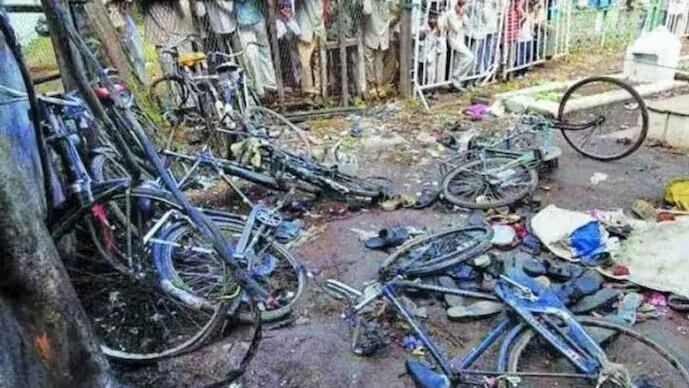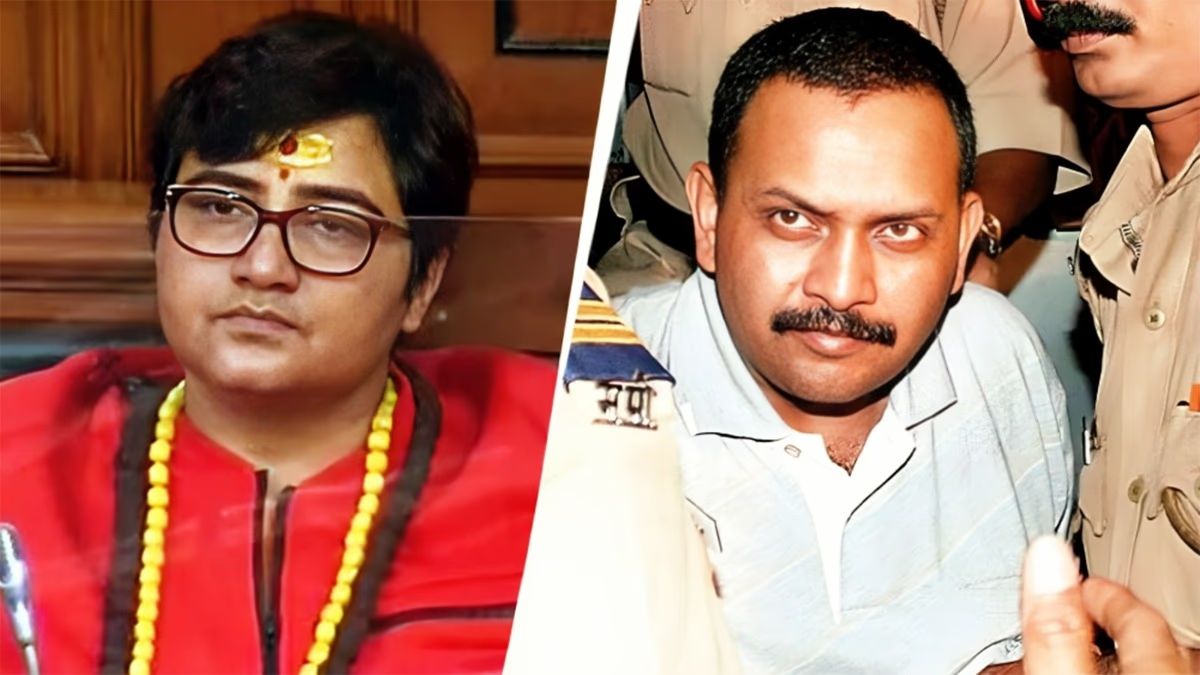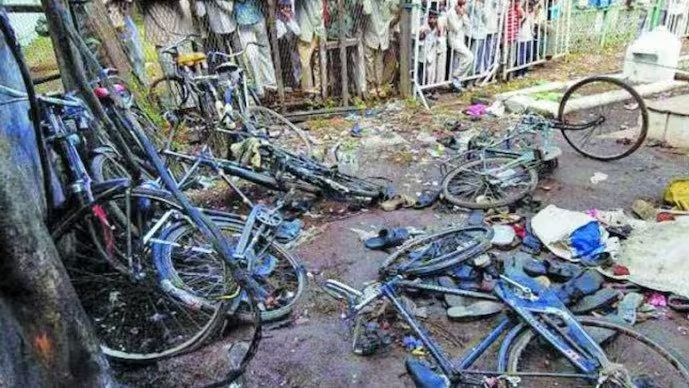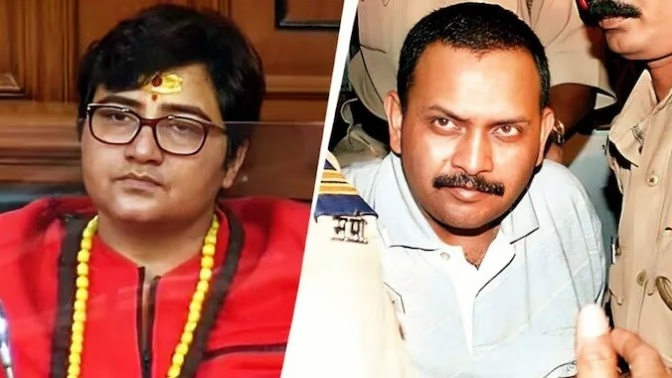Nearly 17 years after the bomb blasts in Malegaon, Maharashtra on September 29, 2008, a special court in Mumbai on Thursday acquitted all seven accused, including former BJP MP Pragya Singh Thakur and Lieutenant Colonel Prasad Purohit, stating that there was 'no credible and substantial evidence' against them.
The special NIA court identified several major flaws in the prosecution claims, leading to the acquittal of all accused. The court raised serious questions about the methodologies of the investigating agencies (ATS and NIA).
After the verdict, Pragya Thakur, Colonel Purohit, and the other accused expressed their gratitude towards Special NIA Judge A.K. Lahoti and their legal teams. The court identified five major discrepancies in the ATS/NIA investigation.
1. Questionable Two-Wheeler and Bomb:
ATS claimed the bomb-laden two-wheeler (motorcycle) belonged to Sadhvi Pragya Singh Thakur. However, the court found the vehicle was severely damaged, with chassis and engine numbers unclear, making definitive identification impossible. Special Judge A.K. Lahoti stated, "In this case, the numbers were incomplete. Establishing certainty on this basis is not possible without credible evidence."
The court also noted that Sadhvi Pragya had become a 'sanyasi' two years before the incident. The judge stated there was no credible evidence showing that Sadhvi Pragya Thakur owned or had possession of the vehicle.
Read also: Malegaon 2008 Blast Case: NIA Court Cites Evidence Flaws, Several Allegations Unproven
2. RDX and Purohit's Allegations Lacked Proof:
ATS accused Lieutenant Colonel Prasad Purohit of procuring 80 kilograms of RDX from Kashmir and bringing it to the Deolali Cantonment in Nashik to assemble bombs at military informant Sudhakar Chaturvedi’s residence.
Justice Lahoti stated in his ruling, "There is no evidence regarding the source, purchase, and transportation of RDX. Although it was alleged that Purohit brought RDX after completing his posting, no evidence of storing RDX at Purohit’s residence exists. There is also no evidence of RDX in assembling and fitting. Nothing was found to indicate Purohit assembled the bomb; no evidence was available about reconnaissance at the site. Who made the bomb, who parked the vehicle, all remained unproven."
3. Marred Sanctity of the Crime Scene:
Immediately after the blast on September 29, 2008, a massive crowd gathered at the crime scene, which led to stone-pelting in anger. The court concluded this compromised the site's sanctity.
Justice Lahoti remarked, "This court observed two incidents. After the bomb blast, a crowd of about 15,000 gathered at the site, throwing stones, vandalizing vehicles, damaging a police post, snatching revolvers from officers, and police responded with lathi charge, firing, and three types of grenades used for retaliation. This was an immediate event following the bomb blast."
The court also found no comprehensive sketch of the scene during the spot panchnama, and nothing seized of the crowd's thrown stones or other objects. No fired cartridges or caps were seized, nor any fingerprints, DNA samples, or dump data collected, though a fingerprint expert was present.
Read also: All Accused Acquitted in Malegaon Blast Case, Owaisi Questions if Government Will Appeal in Supreme Court
The court observed no barricades were placed to secure and protect the scene immediately. Thus, the court concluded contamination occurred. Analyzed items from the contaminated scene thus could not yield 100% accurate results.
4. Laptop Seizure, Interception, and Authorization Flaws:
Critical evidence related to the conspiracy was an alleged meeting recording on the laptop of accused Sudhakar Dwivedi. It reportedly contained recordings of meetings where the Malegaon bomb plot was hatched.
However, the court concluded Dwivedi's arrest and house search were improperly conducted, and belongings found were not sealed. The laptop remained unsealed in an ATS officer's custody for more than 24 hours, raising tampering possibilities, thus considered unreliable.
Justice stated, "The main parts of the conspiracy took place in Faridabad and Bhopal meetings. Witnesses did not support the prosecution's case, and those who did were found unreliable. No acceptable evidence was on record concerning meetings in Kolkata, Indore, Ujjain, Nashik, and Pune. Witnesses retracted previous statements given to ATS. Hence, neither conspiracy nor meetings were proven."
ATS also relied on some call interceptions. However, the court found there was no authorization for intercepting phone calls. Moreover, ATS collected voice samples of accused persons, supposedly matching intercepted call recordings. Yet, the judge remarked, "The process adopted for obtaining voice samples of accused was not beyond doubt. The court found mobile interceptions unauthorized for the period in question."
Read also: Malegaon Blast Case: Sadhvi Pragya Acquitted, Uma Bharti Says Digvijay Concocted 'Saffron Terrorism' Plot
Under the Unlawful Activities (Prevention) Act (UAPA), ATS required government approval to prosecute accused individuals. Special Judge Justice Lahoti indicated, "Two approval orders under UAPA were issued by the then additional chief secretary home. Both were defective and invalid. No judicial discretion was exercised during approval."
5. Abhinav Bharat Organization’s Case:
ATS alleged the accused worked under an organization named Abhinav Bharat, where funds were raised and distributed for terrorist acts, arms, and ammunition.
However, the judge noted that accused businessman Ajay Rahirkar was the treasurer, and Purohit was a trustee of the organization. The amount collected as donations was distributed by Rahirkar to Purohit and Major (Retired) Ramesh Upadhyay (another co-accused).
However, the judge stated, "Purohit used that amount for personal purposes, home construction, and LIC policies. But no evidence showed the amount was used for terrorist activities."




